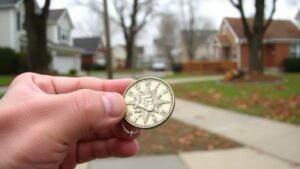Advanced Depth Calibration Techniques for Uneven Terrain
Advanced Depth Calibration Techniques for Uneven Terrain
Depth calibration in uneven terrain is a pivotal aspect of various industries, including agriculture, construction, and environmental monitoring. Accurate depth measurements are essential for effective planning and execution of projects, as inaccuracies can lead to significant cost implications and operational inefficiencies. This article explores advanced techniques in achieving precise depth calibration while addressing the challenges presented by uneven terrain.
Understanding Depth Calibration
Depth calibration refers to the process of adjusting the measurement tools used to ascertain the depths of soil, water, or other materials. This adjustment ensures that measurements taken in the field reflect true values by compensating for environmental variables and equipment calibration errors. In uneven terrains, factors such as topography, soil composition, and vegetation significantly influence measurements.
Challenges of Depth Calibration in Uneven Terrain
Uneven terrain poses several challenges that must be addressed for effective depth calibration, including:
- Topographical Variability: Hills, valleys, and depressions can affect the precision of depth measurements.
- Soil Composition: Varying soil properties may lead to different signal attenuation in remote sensing techniques.
- Vegetation Cover: Dense vegetation can obstruct measurement sensors, complicating data collection.
Advanced Calibration Techniques
To overcome the challenges mentioned above, several advanced depth calibration techniques have been developed. Here are some of the most effective methods:
1. Multi-sensor Fusion
Multi-sensor fusion involves integrating data from various measurement tools, such as LiDAR, ground-penetrating radar (GPR), and traditional surveying instruments. By leveraging multiple data sources, practitioners can achieve a higher degree of accuracy. For example, LiDAR can provide high-resolution elevation models, while GPR can offer insights into sub-surface structures.
2. Geostatistical Methods
Geostatistical techniques, like kriging, make use of spatial autocorrelation to estimate depth in various points across uneven terrain. This method involves using known measurement data to predict unknown values based on the spatial arrangement of those measurements. Studies, such as those conducted in agricultural settings, have demonstrated significant accuracy improvements over traditional interpolation methods.
3. Differential GPS (DGPS)
Differential GPS enhances traditional GPS accuracy by correcting signals received from satellites using a network of fixed ground reference stations. This technique reduces positional error to a few centimeters, making it particularly advantageous for measuring depth in uneven terrain. Projects such as geological surveys have benefitted from DGPS by providing consistent and precise depth measurements.
4. Terrain Correction Algorithms
Useing terrain correction algorithms helps adjust depth readings based on the terrains slope and aspect. These algorithms account for the angle of incidence and the reflection of electromagnetic signals used in sensing technologies. For example, precise depth calibration in mining operations often uses such algorithms to enhance data accuracy across various elevation profiles.
Case Studies
To illustrate the application of these advanced techniques, two notable case studies are highlighted below:
Case Study 1: Agricultural Soil Depth Measurement
In a study conducted in Californias Central Valley, agronomists utilized a combination of multi-sensor fusion and geostatistical methods to assess soil depth variations across uneven farmland. By integrating LiDAR data with soil profile measurements, the team achieved a predictive model that improved crop yield forecasts by 15%.
Case Study 2: Urban Development Projects
During urban expansion in hilly terrains around Seattle, engineers employed DGPS alongside traditional surveying techniques to ensure accurate depth measurements for foundation construction. The integration of DGPS allowed for real-time adjustments to construction plans, reducing projected costs by approximately 10% through better resource allocation and error minimization.
Conclusion
The challenges presented by uneven terrain in depth calibration can be effectively addressed through advanced techniques such as multi-sensor fusion, geostatistical methods, differential GPS, and terrain correction algorithms. These methodologies not only enhance measurement accuracy but also contribute to cost savings and better project outcomes across various industries.
Actionable Takeaways
- Invest in multi-sensor systems for enhanced data integration in depth measurement.
- Use geostatistical techniques for spatial depth predictions and improvements.
- Incorporate DGPS technologies in projects requiring high positional accuracy.
- Use terrain correction algorithms to refine depth measurements in variable landscapes.


